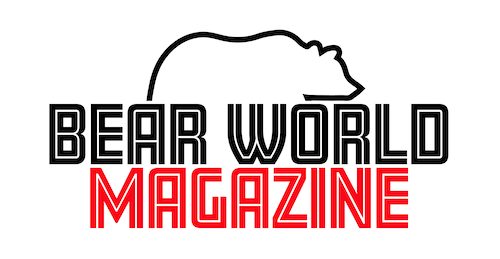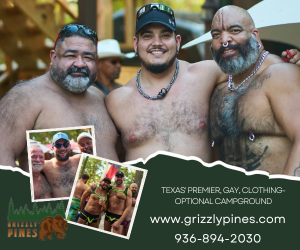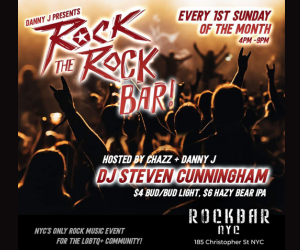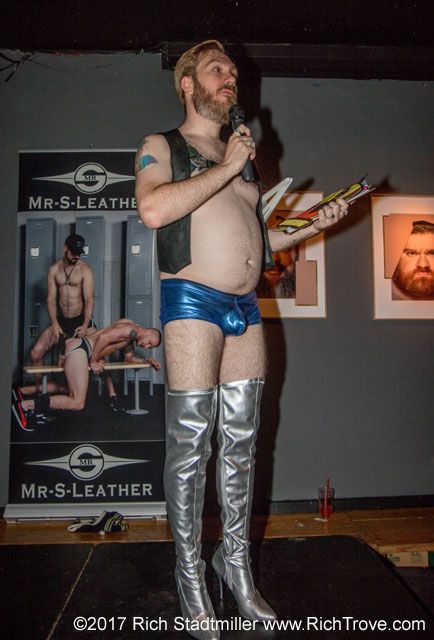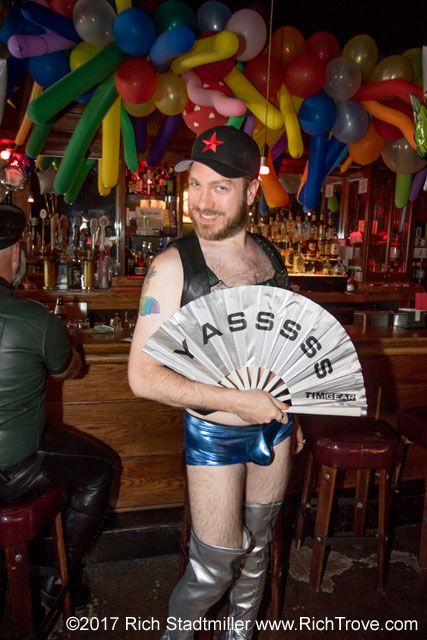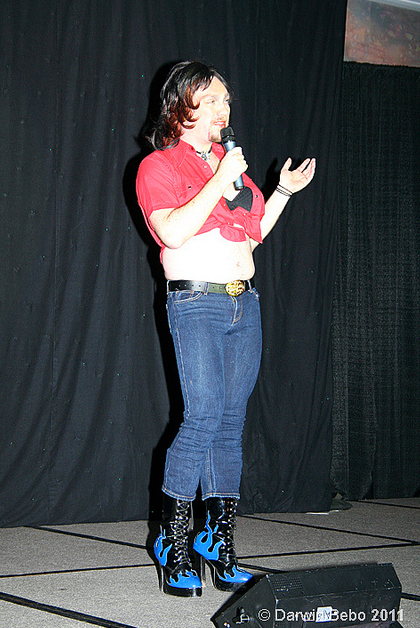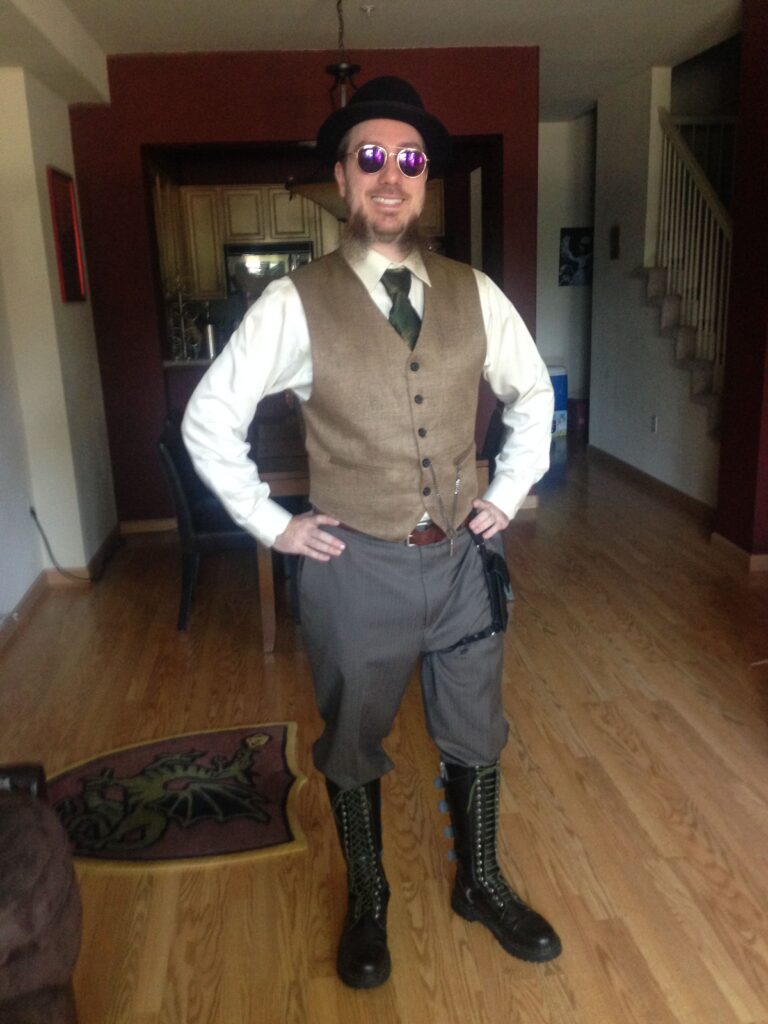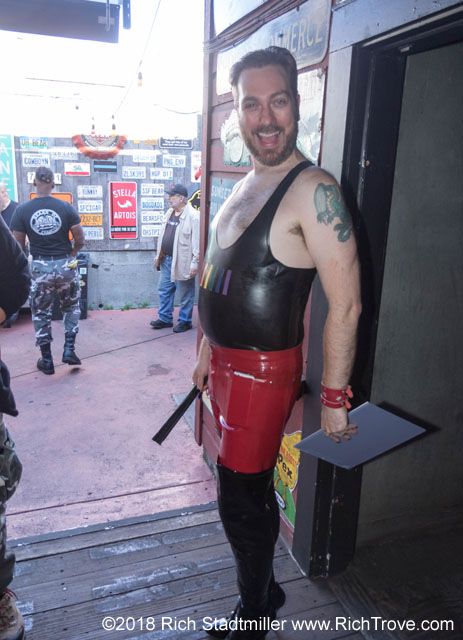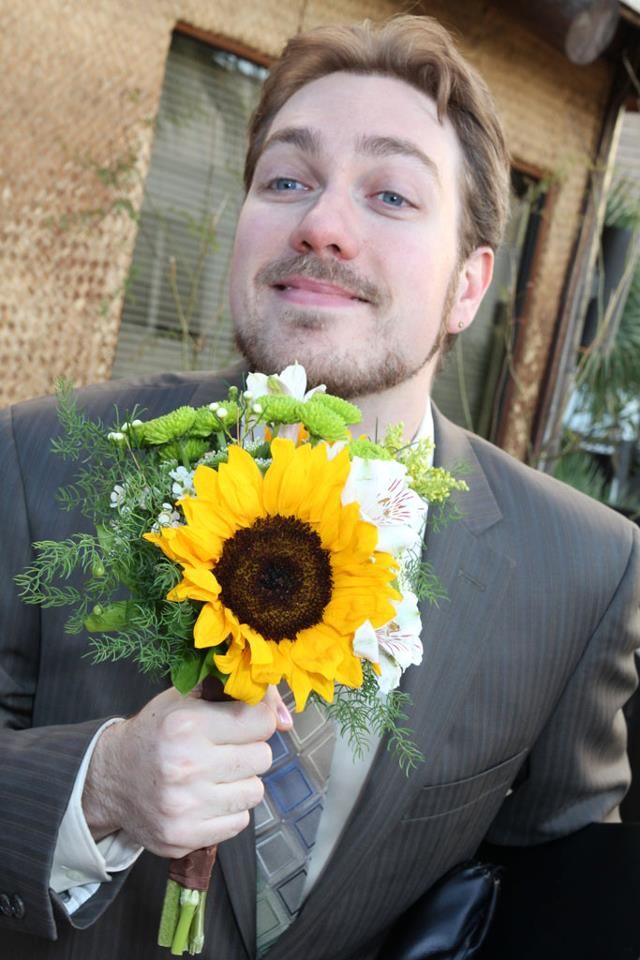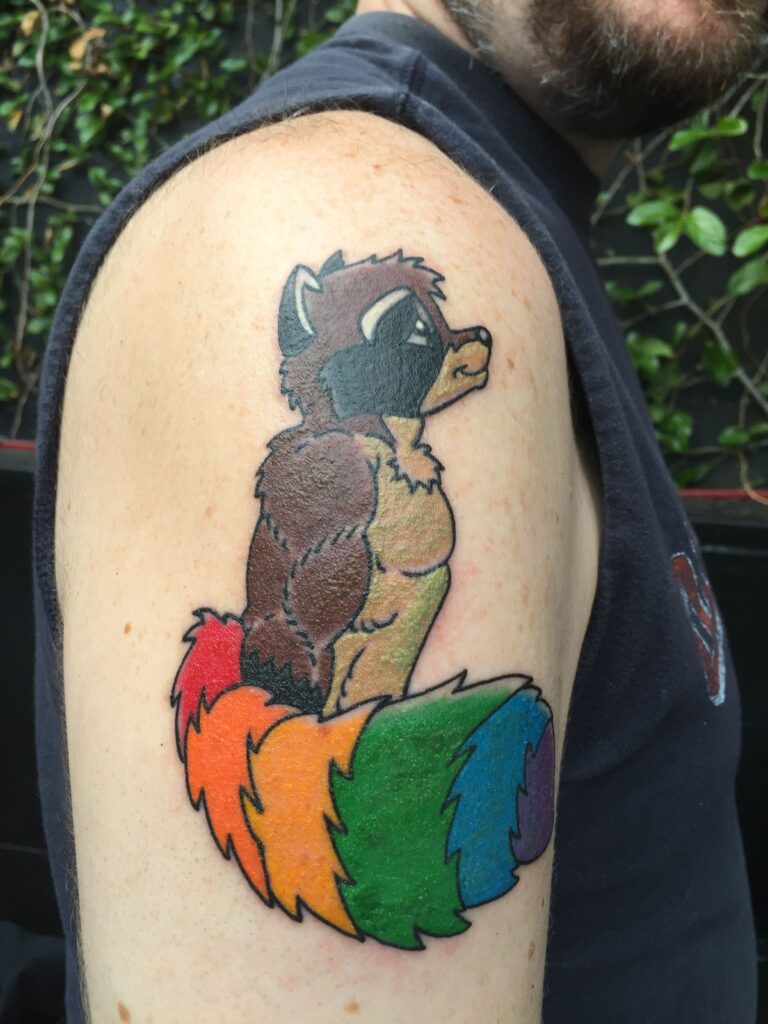Erik Greenfrost discusses upcoming Bearrison Street Fair, creating more welcoming and affirming community
The San Francisco Sisters of Perpetual Indulgence, Inc., (SPI) in collaboration with the Bears of San Francisco (BOSF), have announced their plans to hold the inaugural Bearrison Street Fair on Saturday, October 23, 2021, from 12:00 – 6:00 p.m. in the SoMa district of San Francisco, CA.
Bearrison Street Fair will seek to provide an inclusive event for all members of the adult LGBTI+ community which promotes body positivity for all and builds a more supportive, welcoming, and inclusive bear scene by representing a diverse arena of cultures.
“We are really excited about this partnership between SPI and BOSF,” says Bearrison Co-Chair and BOSF Chair Erik Greenfrost. “The Sisters have a wealth of knowledge and a history of engaging in inclusive, fun, well-organized projects like Pink Saturday and Easter In The Park, which will help us make Bearrison a fabulous community event.”
We recently spoke to Erik, who identifies as gender non-conforming (pronoun flexible), who spoke about his own personal history with the bear community, her emerging enby identity, and their ascension into “Bear leadership”. Now, as the chair of the Bears of San Francisco and the Co-Chair of the Bearrison Street Fair, Erik plans to focus their leadership on making the Bear community more affirming and welcoming, allowing the community to continue to remain true to its idealistic roots of body positivity and counter-culture acceptance, while removing the toxic exclusive elements that have developed around Bear identity.
Kyle Jackson: Hello Erik! Can you give us a bit about your background and the background of the Bearrison Street Fair?
Erik Greenfrost: Hello Bear World! My name is Erik Greenfrost, and I was born and raised in Michigan. After college I drove across the country to the SF Bay Area and have been bouncing around there (Oakland, San Francisco, Santa Cruz, and San Jose) for the past fourteen years. My very first week living on the west coast was also the last year of a Bear street fair in San Francisco. I remember attending and falling in love — suddenly my attraction to older, furry guys had a name and a community!
Shortly thereafter, though, I was at the Lone Star Saloon embracing my new identity as a cub, when some bitter queen informed me that I was neither furry enough nor big enough to be a cub. I knew that I certainly wasn’t an otter, so I decided then and there that I would be a raccoon — cute, chunky, mischievous, and I dig through the trash to find my men!
Over the years, I saw many of our large gatherings disappear from the Bay Area — Hairrison Street Fair, International Bear Rendezvous, Halloween in the Castro, Pink Saturday… I’ve always felt there was an underlying rumbling of energy to bring a Bear street fair back, and there were discussions throughout the years, but nothing seemed to materialize.
Eventually, I was recruited for the steering committee of the Bears of San Francisco and became Chair. I also met my dear friend Sister Desi Juana Dewitt, one of the SF Sisters of Perpetual Indulgence. In passing he said something I had heard many times before — “Hey, wouldn’t it be great to have a street fair focused on the Bear community?” — but this time I said — “You know what? Yes, and we should do it!” The Sisters are such a powerhouse in SF for fundraising and joy and event planning, it seemed like the perfect partnership to bring the fair to life.
We had our first meeting in the back patio of the SF Eagle to see if there was even any interest for a project of that size. From the start, we knew that we wanted our fair to be community focused and inclusive — so that all of the woodland animals and friends would feel welcome. The response was positive, so we’ve spent the past year and a half working to turn our dream into a reality. (Find out more at www.bearrison.org!)
KJ: What have been some of your experiences as a gender nonconforming Bear in the Bear community?
EG: I’ve always pushed against gender stereotypes, but I really first began experimenting with gender in college — a night out at a goth club with black nail polish, for example, slowly morphed into a personal defining feature, and I have been painting my nails for nearly two decades now. What started as gender nonconformity has since blossomed into my current identity as genderqueer, specifically as a Gender Fuck — I think that gender is fascinating and ridiculous and socially constructed, so I just love fucking around with it. (Which is why I’m pronoun flexible — use whatever the hell you want, or switch it up every time!)
I think I was lucky that my first experiences with the Bear community were in San Francisco, where folks seemed to generally just roll with what I was dishing out. Other than unfortunate encounters here and there, people seemed to accept that I presented differently than others in the Bear community.
As I became more and more confident in my gender identity and my presentation, I think others responded to that as well. Now when I go out to the bar in a leather vest and knee-high black heels, or my rainbow kilt plus white glittery six-inch platforms, I definitely get a few side eyes — but I get way more compliments!
However, I’ve sometimes felt a general undercurrent of unease with my gender presentation. For example, I competed at International Bear Rendezvous in 2011, its final year — partly to prove to myself that I could do it, and partly to give a message to the community. It was an amazing weekend and I threw myself into it with gusto.
The final night of the competition we had to put together two looks — one sexy, and one “evening wear”. Like many other contestants, I basically just wore underwear for my first look. Unlike the other contestants, I then went backstage and in just under an hour threw on some genderqueer drag. It was rough (I am by no means a polished drag queen), but I came stomping out on stage in my heels and my skimpy shirt with my hairy belly hanging out and my goatee matched against my lipstick and false lashes. I worked it for all it was worth, and lucky for me two of the judges were also Sisters, so I think they “got it”.
I won the title for Mr. International Bear Cub and was ecstatic (despite being a gendered title). My boyfriend, though, got to hear the whispers of others while he sat in the audience or rode the elevator. He relayed to me that some of the attendees — and even some other contestants — were not so thrilled. Once again, I didn’t fit the mold for what a “cub” was supposed to be. No matter how much I had worked to sell raffle tickets, to answer interview questions, and to chew up that stage, there was always going to be something I wasn’t enough of — big enough, furry enough, masculine enough.
KJ: What do you think are some of the biggest challenges in the Bear community?
EG: I think one of our largest challenges is our inability to hold a conversation about discrimination within our community.
There’s this mythos about the Bear community forming as a protest against the rigid expectations of the gay community (be that the Castro Clones, twinks, etc.) But our origins don’t isolate us from the effects of our own prejudice. I’ve found community members particularly unwilling to engage in discussions about racism and sexism, content to just reify the idea that the Bear community has always been accepting of all outsiders, despite many genderqueer and people of color telling us that it hasn’t.
I have an example even from my own club. In 2019, Jack Thompson — an amazing biracial trans man from Berkeley, California, won International Mr. Leather. His win was celebrated widely, but there was also a bunch of transphobic shit that occurred — including statements from the (now former) president of the Southeast Conference of Clubs (which is comprised of BDSM, fetish, leather, and bear clubs). In the backlash to these statements, many other organizations were stepping up to make it clear that #JackIsMyIML and that trans people were not just welcomed in their organizations, but an integral part of them.
I wanted to release something similar with my own club. I was met with some fairly fierce backlash. I was told that a statement would be “distracting” from Jack’s win, that there was no need to interfere with something occuring on the other coast, and that our club was clearly gender accepting — we had a woman serve on our steering committee for years, after all! There was a question about why we should get political when our record could stand for itself.
To say I was disappointed would be an understatement. To me, being a Bear club is already inherently political — our very existence is political. As queer folks, you would think we’ve learned our lesson that silence = death. But I feel that too many in the Bear community want to rest on the laurels of the inclusivity mythos, and avoid difficult conversations. These conversations may be scary (especially for white men), but they need to be had.
KJ: How do you plan to address these challenges?
EG: To address these challenges, you have to lead by example. As the Chair of the Bears of San Francisco, I’m out in the community, performing gender in a multitude of ways and hopefully engaging others in those difficult conversations (especially as an anti-racist co-conspirator). As the producer of the Bay Area Cub Contest, I have made it clear that it is not a gendered title — anyone of any gender identity can compete and show us what “cub” means to them.
With Bearrison Street Fair, we intentionally built ideas of inclusion into the fabric of our event. From the outset we wanted to create a street fair that expanded the concept of the “Bear Community”, upholding our values of body positivity and philanthropy without being exclusive or rigid in our definition of what constitutes a “Bear”.
We have pulled together an amazing, diverse group of volunteer leaders — ranging across gender identities, sexualities, races, and abilities. We created “Teams” to help break the work into pieces, and made sure to have both an Accessibility Team and a BIPOC Affirming and Welcoming Team. We threaded issues of inclusion into all aspects of the fair – from our marketing to the way we are recruiting for vendors and volunteers.
Most importantly, we want to hear feedback — now, during the fair, or after — about what we did well, and what we still need to do. It’s not enough to just talk the talk and say we are inclusive. We have to make sure that our attendees actually feel like we are producing a welcoming and culturally competent event. And if we aren’t, we have to make sure they feel safe to tell us what we can do to improve.
As a community, we can both appreciate the history of Bear culture while simultaneously celebrating a more diverse and colorful future. We can have conversations with each other about power and privilege and discrimination. We can lead by listening, reflecting, and responding, especially to genderqueer and BIPOC community members.
To learn more about the Bearrison Street Fair, visit bearrison.org and follow the Facebook event page.
To learn more about Bears of San Francisco, visit bosf.org, and follow them on Facebook, Instagram and Twitter.
For more about the SF Sisters of Perpetual Indulgence, visit thesisters.org and follow them on Facebook, Instagram, Twitter and YouTube.
